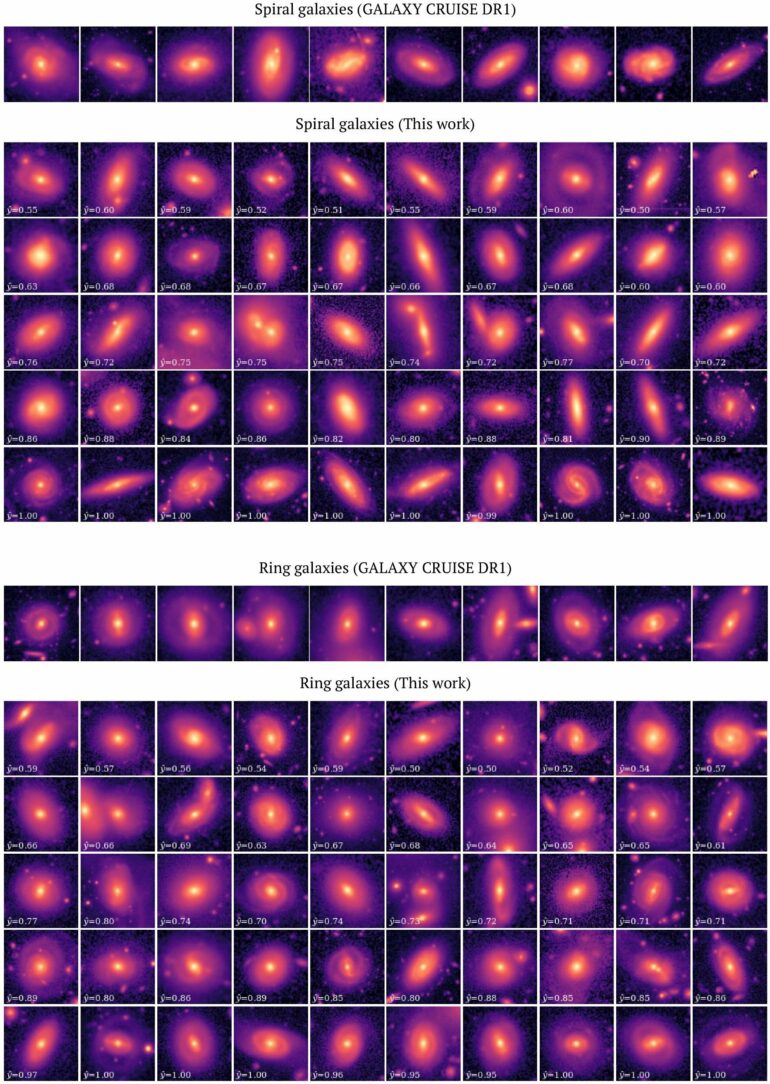Building on the synergy between citizen astronomer classifications and AI, astronomers have discovered approximately 400,000 spiral galaxies and 30,000 ring galaxies in data from the Subaru Telescope. This is the first example of research building on the classification data from the citizen science project “GALAXY CRUISE.”
Galaxies display a wide variety of morphologies that reflect their histories. Data sets from powerful cutting-edge facilities like the Subaru Telescope contain so many galaxies that astronomers cannot classify them all by hand. In the GALAXY CRUISE citizen science project, professional astronomers asked more than 10,000 citizen astronomer volunteers to do the classifications. But even divided among thousands of volunteers, classification still takes time.
AI can conduct classifications quickly, but first it needs to be trained on a catalog of classification examples prepared by humans.
For this new study, a team led by Rhythm Shimakawa, associate professor at Waseda University, trained an AI on a set of 20,000 galaxies classified by humans as part of GALAXY CRUISE. The team then turned the AI loose on all 700,000 galaxies in the Subaru Telescope data set.
The AI classified 400,000 of them as spiral galaxies and 30,000 as ring galaxies. Even though ring galaxies account for less than 5% of all galaxies, this research yielded a sample large enough for meaningful statistical analysis.
Statistical analysis showed that on average, ring galaxies show intermediate characteristics between spiral and elliptical galaxies. This is consistent with the latest supercomputer simulations. The article, “GALAXY CRUISE: Spiral and ring classifications for bright galaxies at z = 0.01–0.3” was presented in Publications of the Astronomical Society of Japan on January 29, 2024.
Shimakawa comments about the role of GALAXY CRUISE in his research and future prospects, “Although AI classification takes less than one hour even for 700,000 galaxies, this work cannot be done without the data collected by GALAXY CRUISE over the past two years. We would like to thank all the citizen astronomers who participate in the project. I hope to see more collaborative outcomes in the future.”
More information:
Rhythm Shimakawa et al, GALAXY CRUISE: Spiral and ring classifications for bright galaxies at z = 0.01–0.3, Publications of the Astronomical Society of Japan (2024). DOI: 10.1093/pasj/psae002
Citation:
Citizen astronomers and AI discover 30,000 ring galaxies (2024, March 14)



